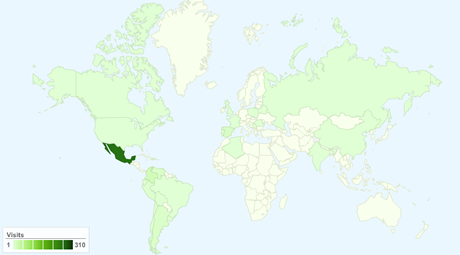Way back, when websites were nothing more than simple electronic brochures, site owners relied on basic hit counters to measure their success.
Modern websites communicate, sell, provide support, interact with people among many other things, so they needed something better to tell them more about their visitors.

The Basic Concepts
There are many options available today to measure web metrics, like Google Analytics, Piwik, Clicky, Yahoo! Web Analytics, and so. Each one of those has its own way to show the reports and some unique features, but there are a few basic concepts that are fairly common to all of them.
Visit or Session
Refers to the sum of all actions a user performs on the site, from entrance to exit. Highlights include the duration of the visit, entry page, exit page, the percentage of bounce or Bounce Rate described below.
Page Views
Are the pages the user visited in the session. Very useful to let us know what the user did, things that caught his attention, and even the pages they did not visit.
Visitor
The user who made the visit. We may find the visitors divided in new visitors and returning visitors, which lead us to fidelity indexes. It also may contain a large amount of technical information about their computer, browser, operating system, screen size, plugins, location, etc.
Referrers
Indicates where the users came from, and are separated into four main types: Search Engines, Other Websites, Campaigns and Direct Entry.

As their names suggest, Search Engines means visitors that came from a performed search. This indicator often comes with the words they searched for. Other Websites are links posted on websites. Campaigns refer to online ads (AdSense, etc.). And Direct Entry is when people write the site url.
Bounce Rate
The people who were not interested in the site, it usually means it was not what they were looking for. It's important to analyze the search words they used, or the site referrer to know what they wanted, what were they looking for and why they left.
Goals
Most tracking systems offer the ability to set Goals, which may include visiting a page, downloading a file, complete a form, sign up, etc.
Conversion
Once you have Goals set in the system, you can use them to compare visits, pageviews, etc, with the number of times the goal is met, each time a user reaches the goal is a conversion. Modern analytic systems allow us to compare conversions against many of the above concepts individually.
Is My Website Successful?
The success of a website is always related to the expectations you put on it, but analyzing and implementing web metrics can help your website be better doing what it does, so you can expect more from it.
Online web analytics are a very good source of information you can use to improve user experience, they are easy to use, and many of them free of charge.
So, start measuring!